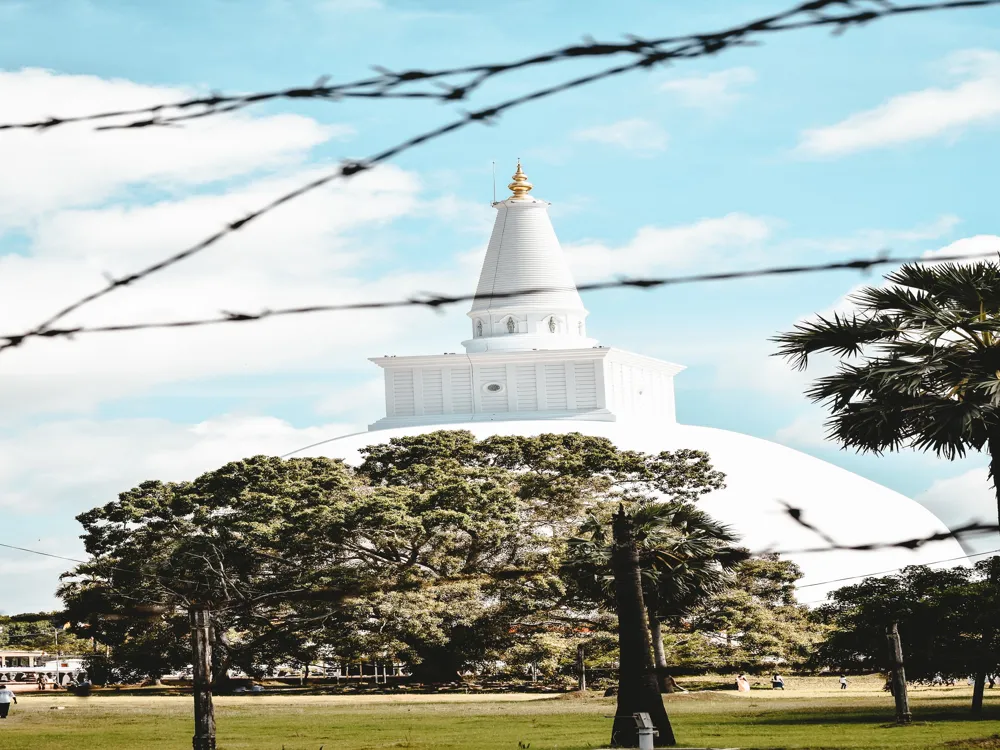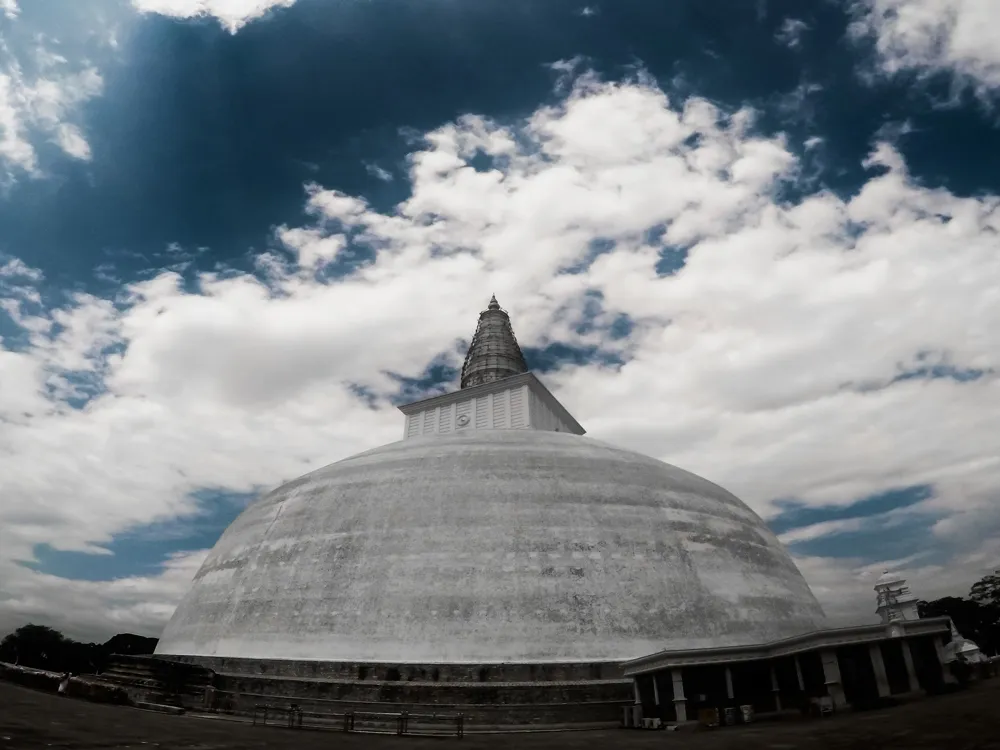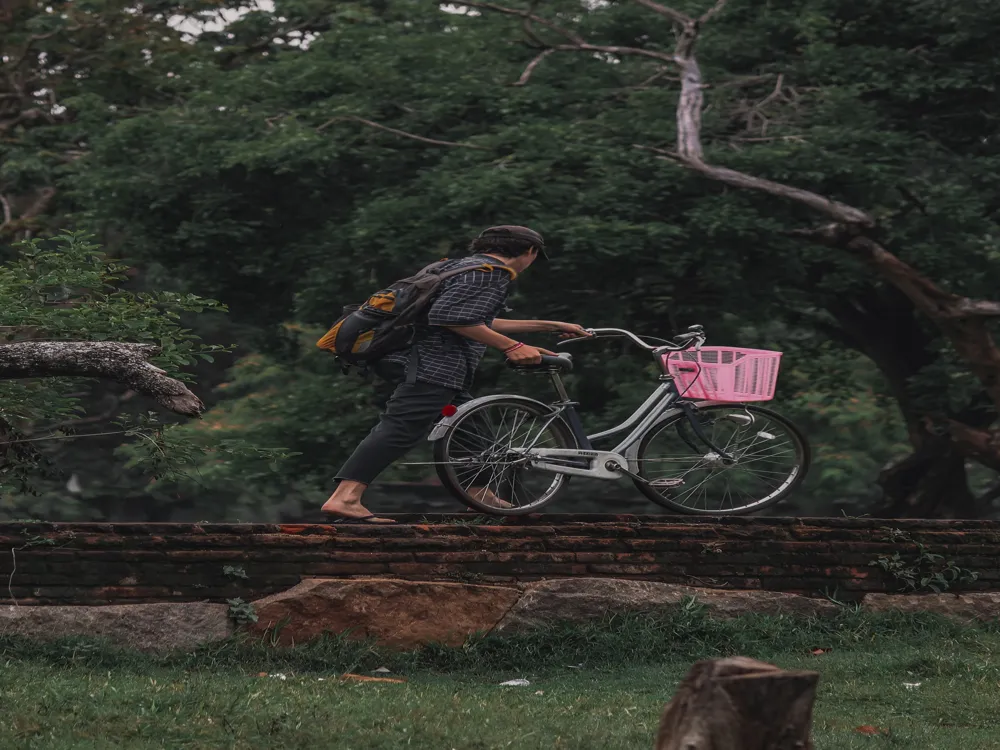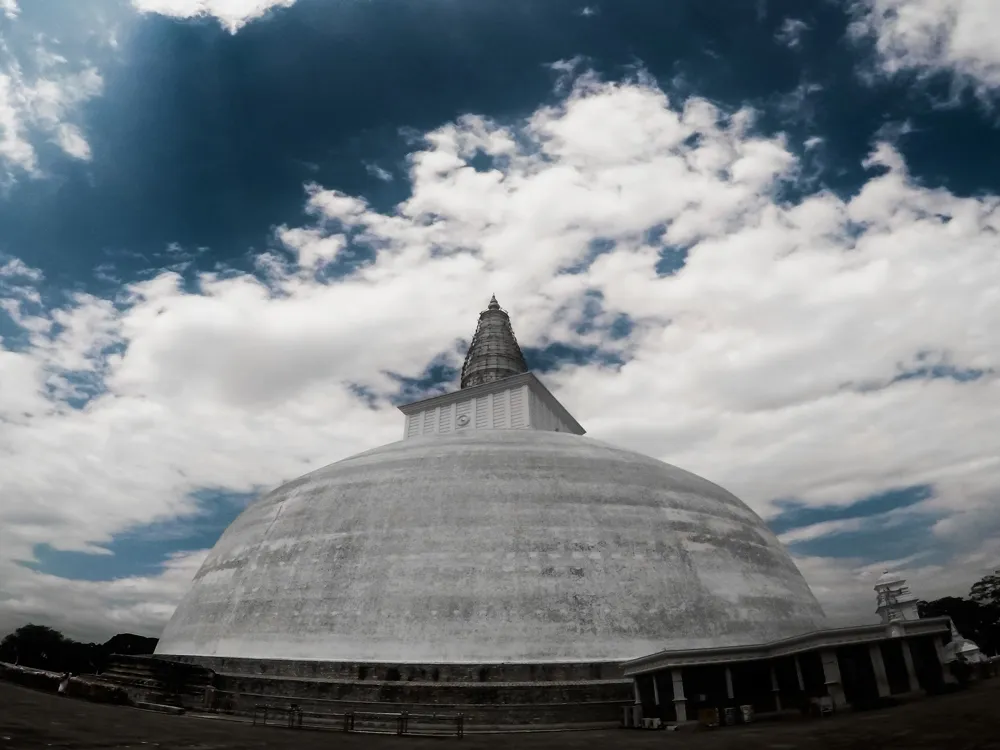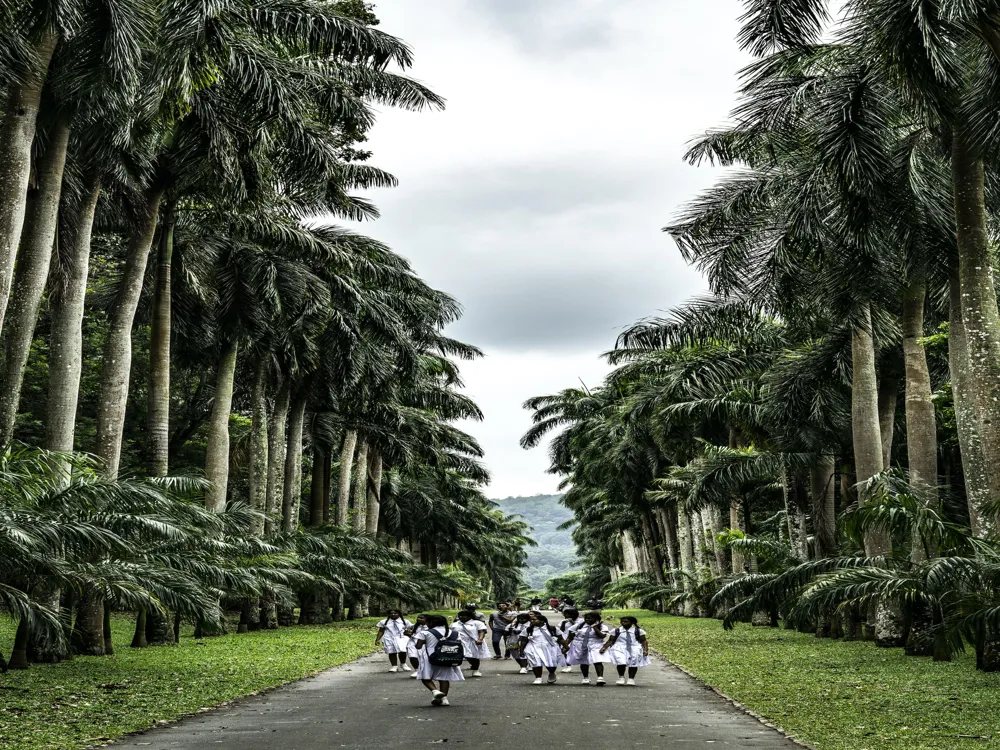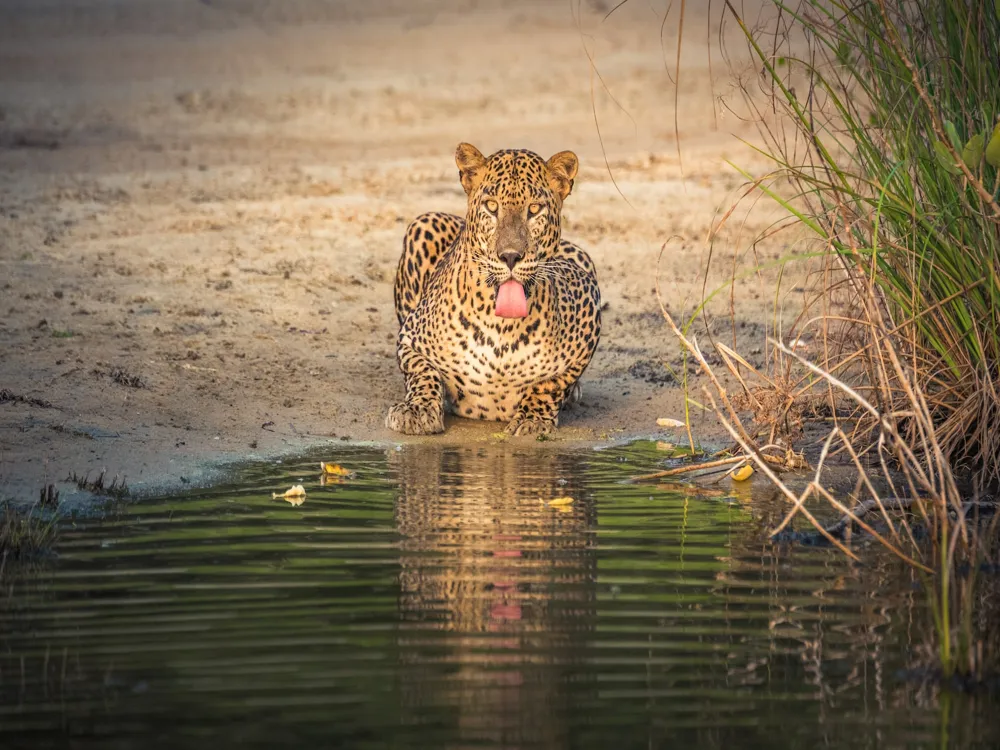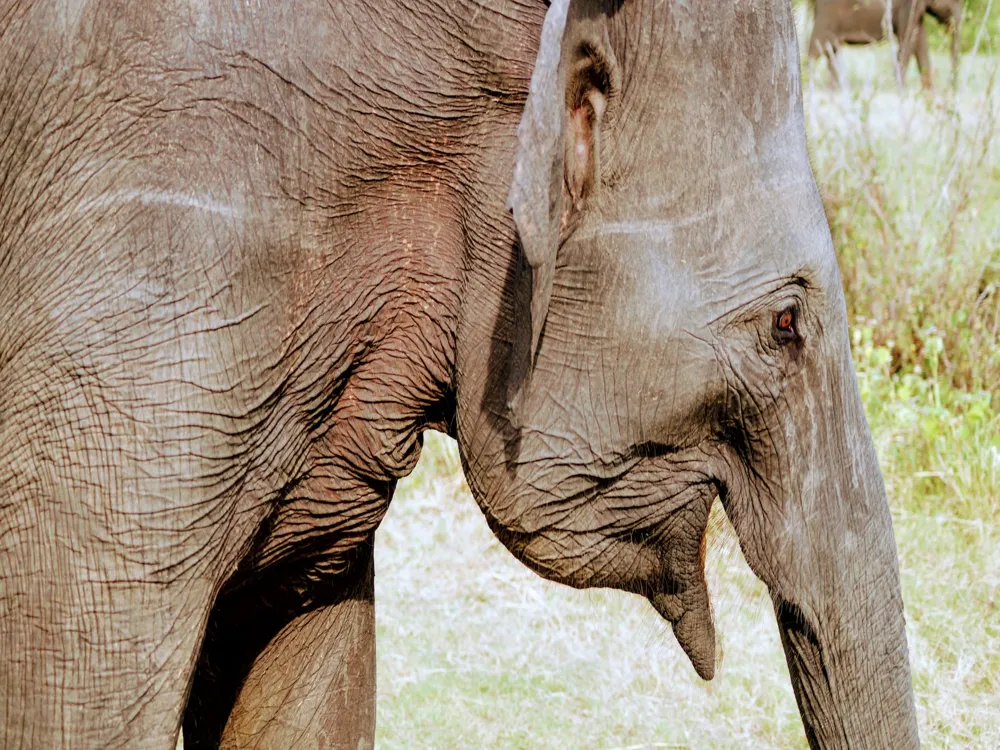Mihintale, a significant cultural and historical landmark in Sri Lanka, is renowned for its deep-rooted Buddhist history and breathtaking views. Located near Anuradhapura, it's considered the cradle of Buddhism in Sri Lanka. The site, stretching across a vast area, is surrounded by lush greenery and hosts an array of ancient architectural marvels. The significance of Mihintale extends beyond its religious importance; it's a testament to the ancient Sinhalese civilization's mastery in architecture and engineering. The history of Mihintale dates back to the 3rd century BC when it is believed to be the meeting place of King Devanampiya Tissa and Arahat Mahinda, which marked the introduction of Buddhism to Sri Lanka. This encounter transformed not only the religious landscape of the island but also its cultural, social, and political facets. Mihintale's architectural splendor is woven into its numerous stupas, monastic complexes, and cave hermitages, showcasing the advanced level of civil engineering and construction techniques of the era. Visitors can explore the ancient ruins that include the Maha Stupa, believed to enshrine the relics of Arahat Mahinda, and the Ambasthala Dagaba, located at the spot where the historic meeting occurred. The Naga Pokuna (Snake Pond), with its elaborate stone carvings, and the Aradhana Gala, a rock that offers panoramic views of the surrounding landscape, are other significant attractions. The site is also known for its flight of 1840 granite steps, which pilgrims and tourists alike climb to reach the top, symbolizing the path to enlightenment. The natural beauty of Mihintale is complemented by its rich wildlife, including diverse bird species, making it a paradise for nature enthusiasts and bird watchers. The serene and tranquil environment of Mihintale offers a spiritual retreat for visitors, providing a glimpse into the harmonious coexistence of nature and spirituality. The architecture of Mihintale is a mesmerizing blend of religious symbolism, ancient engineering, and natural integration. The complex showcases the evolution of Buddhist architecture in Sri Lanka, characterized by its stupas, monastic buildings, and intricate carvings. The Maha Stupa, standing majestically at the site, is an architectural marvel of its time. Its dome-shaped structure, symbolic of the Buddhist cosmos, is built using bricks and is thought to have been originally covered in a bright white plaster, making it visible from miles away. The stupa's base is adorned with intricate carvings and friezes that depict various religious motifs and stories from Jataka tales. The monastic complex of Mihintale exhibits the sophisticated urban planning and architectural prowess of ancient Sinhalese builders. The complex includes residential quarters for monks, intricately carved stone bathing ponds, and meditation caves. These caves, carved into the rock face, provided ascetic monks with a secluded environment for meditation and reflection. One of the most notable architectural features at Mihintale is the Naga Pokuna, an artificial pond adorned with a five-headed cobra sculpture. This sculpture, carved out of the living rock, is not only an example of the artistic skill of the ancient craftsmen but also reflects the religious and cultural significance of the cobra in ancient Sinhalese culture. The architectural elements of Mihintale are not limited to its buildings; the landscape itself plays a crucial role. The integration of the natural topography with the built environment, such as the use of the mountain's contours for constructing stairways and platforms, is a testament to the ancient architects' respect for and understanding of nature. The ideal time to visit Mihintale is during the cooler months from November to March. The weather is more pleasant, making the climb and exploration of the site more comfortable. Visitors should dress modestly, covering shoulders and legs. It's also important to remove shoes and hats before entering the sacred areas. The climb can be strenuous, so carrying water is essential. Sunscreen and hats are advisable for protection against the sun. Hiring a local guide can enhance the experience, offering insights into the site's history and architecture. Photography is allowed, but visitors should avoid posing inappropriately in front of religious statues and structures. Mihintale is accessible from Anuradhapura, which is well-connected by road and rail. Buses and taxis are readily available from Anuradhapura to Mihintale. For those driving, it's about a 13-kilometer journey from Anuradhapura to Mihintale. The site also has a parking area for visitors. Read More:Overview of Mihintale, Anuradhapura
Architecture of Mihintale
Tips When Visiting Mihintale
Best Time to Visit
Respecting the Sacred Site
Staying Hydrated and Protected
Navigating the Site
Photography Etiquette
How to Reach Mihintale
Mihintale
Anuradhapura
₹ 21,999 onwards
View anuradhapura Packages
Weather :
Tags : Mountain
Timings : 8:00 AM - 5:00 PM
Time Required : 3 - 4 hours
Entry Fee : LKR 1270
Planning a Trip? Ask Your Question
Anuradhapura Travel Packages
View All Packages For Anuradhapura
Top Hotel Collections for Anuradhapura

Private Pool

Luxury Hotels

5-Star Hotels

Pet Friendly
Top Hotels Near Anuradhapura
Other Top Ranking Places In Anuradhapura
View All Places To Visit In anuradhapura
Faq on Anuradhapura
What is the best time to visit Mihintale?
The best time to visit is during the cooler months from November to March, when the weather is more pleasant for climbing and exploring. Early morning is ideal to avoid the heat and crowds.
Is there an entrance fee for Mihintale?
Yes, there is a small entrance fee for foreign visitors. The fee is subject to change, so it's a good idea to check the latest information before your visit.
How long does it take to explore Mihintale?
To fully explore Mihintale, including climbing the steps to the top of the mountain and visiting the various archaeological sites, allow at least 3-4 hours.
Are there many steps to climb at Mihintale?
Yes, there are over 1,840 steps to reach the summit. The climb is steep in parts but is considered manageable for people with average fitness levels. The views from the top are well worth the effort.
What should I wear when visiting Mihintale?
It is recommended to dress modestly out of respect for the site's religious significance. Comfortable, lightweight clothing and good walking shoes are advisable. Also, don't forget to bring a hat and sunscreen for protection against the sun.
View anuradhapura Packages
Weather :
Tags : Mountain
Timings : 8:00 AM - 5:00 PM
Time Required : 3 - 4 hours
Entry Fee : LKR 1270
Planning a Trip? Ask Your Question
Anuradhapura Travel Packages
View All Packages For Anuradhapura
Top Hotel Collections for Anuradhapura

Private Pool

Luxury Hotels

5-Star Hotels

Pet Friendly
Top Hotels Near Anuradhapura
Other Top Ranking Places In Anuradhapura
Faq on Anuradhapura
What is the best time to visit Mihintale?
The best time to visit is during the cooler months from November to March, when the weather is more pleasant for climbing and exploring. Early morning is ideal to avoid the heat and crowds.
Is there an entrance fee for Mihintale?
Yes, there is a small entrance fee for foreign visitors. The fee is subject to change, so it's a good idea to check the latest information before your visit.
How long does it take to explore Mihintale?
To fully explore Mihintale, including climbing the steps to the top of the mountain and visiting the various archaeological sites, allow at least 3-4 hours.
Are there many steps to climb at Mihintale?
Yes, there are over 1,840 steps to reach the summit. The climb is steep in parts but is considered manageable for people with average fitness levels. The views from the top are well worth the effort.
What should I wear when visiting Mihintale?
It is recommended to dress modestly out of respect for the site's religious significance. Comfortable, lightweight clothing and good walking shoes are advisable. Also, don't forget to bring a hat and sunscreen for protection against the sun.







